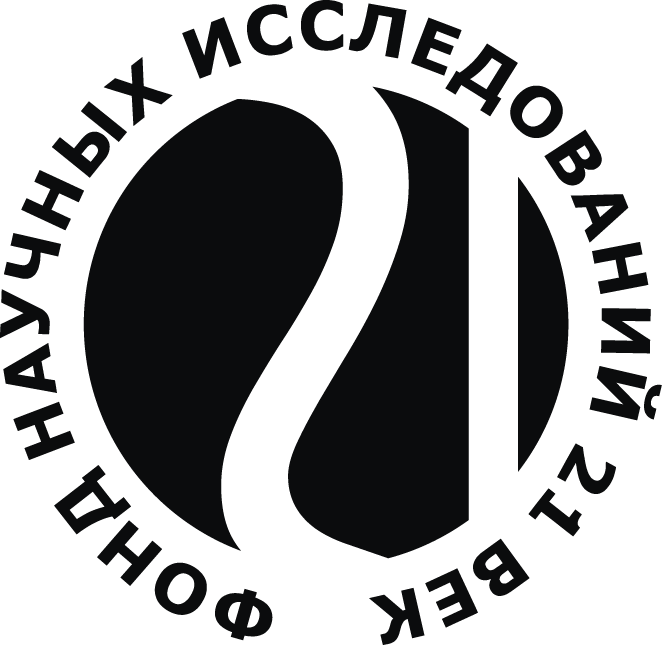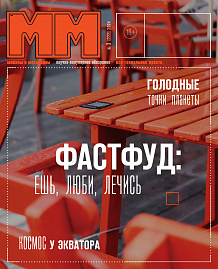НЕИНВАЗИВНЫЙ СПОСОБ ОЦЕНКИ ЗАГРЯЗНЕНИЯ ОКРУЖАЮЩЕЙ СРЕДЫ И РИСКОВ ДЛЯ ЗДОРОВЬЯ ЛЮДЕЙ ПО СОДЕРЖАНИЮ ТЯЖЕЛЫХ МЕТАЛЛОВ В ВОЛОСАХ
Аннотация
Ключевые слова
Полный текст:
PDFКак процитировать материал
Литература
Список русскоязычной литературы
1. Григорьева АА, Миронова ГЕ. Токсическое воздействие свинца на организм человека (обзор литературы). Гигиена и санитария. 2025;104(6):778-80.
2. Копач АЕ, Федорив ОЕ, Мельник НА. Эффекты влияния меди и цинка на живые организмы (обзор литературы). Гигиена и санитария. 2021;100(2):172-7.
3. Рафикова ЮС, Семенова ИН, Хасанова РФ, Суюндуков ЯТ. Уровни содержания кадмия и свинца в волосах населения зауральской зоны Республики Башкортостан. Экология человека. 2020;1:17-24.
4. Скальный АВ. Референсные значения концентрации химических элементов в волосах, полученные методом ИСПАЭС (АНО Центр биотической медицины). Микроэлементы в медицине. 2003;4(1):55-6.
5. Скальный АВ, Скальная МГ, Лакарова ЕВ, Ломакин ЮВ, Шарипов МВ. Методы исследования элементного состава организма: теоретические и прикладные аспекты. Микроэлементы в медицине. 2012;13(3):14-8.
6. Шилов ВВ, Маркова ОЛ, Кузнецов АВ. Биомониторинг воздействия вредных химических веществ на основе современных биомаркеров. Обзор литературы. Гигиена и санитария. 2019;98(6):591-6.
Общий список литературы / Reference List
1. Grigorieva AA, Mironova GE. [Toxic effects of lead on the human body (literature review)]. Hygiene and Sanitation. 2025;104(6):778–780. (In Russ).
2. Kopach AYe, Fedoriv OYe, Melnyk NA. [Effects of the influence of copper and zinc on living organisms (literature review)]. Gigiyena i Sanitariya. 2021;100(2):172-7. (In Russ).
3. Rafikova YuS., Semenova IN, Khasanova RF, Suyundukov YaT. [Cadmium and lead concentrations in human hair in the Trans-Urals Region of Bashkortostan Republic]. Ekologiya Cheloveka. 2020;1:17-24. (In Russ).
4. Skalny AV. [Reference values of the concentrations of chemical elements in hair obtained by the ICP-AES method (ANO Center for Biotic Medicine)]. Mikroenementy v Meditsyne. 2003;4(1):55-6. (In Russ).
5. Skalny AV, Skalnaya MG, Lakarova YeV, Lomakin YuV, Sharipov MV. [Methods of studying the elemental composition of an organism: theoretical and applied aspects]. Mikroenementy v Meditsyne. 2012;13(3):14-8. (In Russ).
6. Shilov VV, Markova OL, Kuznetsov AV. [Biomonitoring of the influence of harmful chemicals using modern biomarkers. Literature review]. Gigiyena i Sanitariya. 2019;98(6):591-6. (In Russ).
7. Ali MU, Liu G, Yousaf B, Ullah H, Abbas Q, Munir MA. A systematic review on global pollution status of particulate matter-associated potential toxic elements and health perspectives in urban environment. Environ Geochem Health. 2019;41:1131-62.
8. Ali MU, Liu G, Yousaf B, Ullah H, Abbas Q, Munir MAM, Irshad S. Biomonitoring and health risks assessment of trace elements in various age- and gender-groups exposed to road dust in habitable urban-industrial areas of Hefei, China. Environ Poll. 2019;244:809-17.
9. Alissa EM, Ferns GA. Heavy metal poisoning and cardiovascular disease. J Toxicol. 2011:870125. doi: 10.1155/2011/870125.
10. Amini H, Hoodaji M, Najafi P. Evaluation of some tree species for heavy metal biomonitoring and pollution tolerance index in Isfahan urban zone. Afr J Biotechnol. 2011;10(84):19547-50.
11. Aničić Urošević M, Vuković G, Vasić P, Jakšić T, Nikolić D, Krivanj S, Popović A. Environmental implication indices from elemental characterisations of collocated topsoil and moss samples. Ecol Indic. 2018;90:529-39.
12. Bargagli R, Monaci F, Borghini F, Bravi F, Agnorelli C. Mosses and lichens as biomonitors of trace metals. A comparison study on Hypnum cupressiforme and Parmelia caperata in a former mining district in Italy. Environ Poll. 2022;116(2):279-87.
13. Bell DSH. Riceabetes: Is the association of type 2 diabetes with rice intake due to a high carbohydrate intake or due to exposure to excess inorganic arsenic? J Postgrad Med. 2015;127(8):781-2.
14. Bolshunova T, Rikhvanov L, Mezhibor A, Zhornyak L, Baranovskaya N, Eremina E. Biogeochemical characteristics of epiphitic lichen lobaria pulmonaria of the Barguzin nature reserve (The republic of Buryatia, Russia). J Environ Eng Landsc Manag. 2018;26(2):120-7.
15. Chen X, Xia X, Zhao Y, Zhang P. Heavy metal concentrations in roadside soils and correlation with urban traffic in Beijing, China. J Hazard Mater. 2010;181(1–3):640-6.
16. Ems T, St Lucia K, Huecker MR. Biochemistry of Iron Absorption. StatPearls Publishing; 2022.
17. Eqani SAMAS, Tanveer ZI, Qiaoqiao C, Cincinelli A, Saqib Z, Mulla SI, Ali N, Katsoyiannis IA, Shafqat MN, Shen H. Occurrence of selected elements (Ti, Sr, Ba, V, Ga, Sn, Tl, and Sb) in deposited dust and human hair samples: implications for human health in Pakistan. Environ Sci Poll Res, 2018;25(13):12234-45.
18. Franceschini N, Fry RC, Balakrishnan P, Navas-Acien A, Oliver-Williams C, Howard AG, Cole SA, Haack K, Lange EM, Howard BV, Best LG, Francesconi KA, Goessler W, Umans JG, Tellez-Plaza M. Cadmium body burden and increased blood pressure in middle-aged American Indians: the Strong Heart Study. J Hum Hypertens. 2017;31(3):225-30.
19. Grau-Perez M, Zhao J, Pierce B, Francesconi KA, Goessler W, Zhu Y, An Q, Umans J, Best L, Cole SA, Navas-Acien A, Tellez-Plaza M. Urinary metals and leukocyte telomere length in American Indian communities: The Strong Heart and the Strong Heart Family Study. Environ Pollut. 2019;246:311-8.
20. Hou S, Zheng N, Tang L, Ji X, Li Y, Hua X. Pollution characteristics, sources, and health risk assessment of human exposure to Cu, Zn, Cd and Pb pollution in urban street dust across China between 2009 and 2018. Environ Int. 2019;128:430-7.
21. Huang L, Liu L, Zhang T, Zhao D, Li H, Sun H, Kinney PL, Pitiranggon M, Chillrud S, Ma LQ, Navas-Acien A, Bi J, Yan B. An interventional study of rice for reducing cadmium exposure in a Chinese industrial town. Environ Int. 2019;122:301-9.
22. Ivanova ES, Shuvalova OP, Eltsova LS, Komov VT, Kornilova AI. Cardiometabolic risk factors and mercury content in hair of women from a territory distant from mercury-rich geochemical zones (Cherepovets city, Northwest Russia). Environ Geochem Health. 2021;43(11):4589-99.
23. Kaplan B, Sussan T, Rule A, Moon K, Grau-Perez M, Olmedo P, Chen R, Carkoglu A, Levshin V, Wang L, Watson C, Blount B, Calafat AM, Jarrett J, Caldwell K, Wang Y, Breysse P, Strickland P, Cohen J, Biswal S, Navas-Acien A. Waterpipe tobacco smoke: Characterization of toxicants and exposure biomarkers in a cross-sectional study of waterpipe employees. Environ Int. 2019;127:495-502.
24. Kerkadi A, Raïq H, Prince MS, Bader L, Soltani A, Agouni A. A cross-sectional analysis of zinc and copper levels and their relationship to cardiovascular disease risk markers in Qatar biobank participants. Front Cardiovasc Med. 2024;10:1305588. doi:10.3389/fcvm.2023.1305588.
25. Lee J, Lee S, Bae G. A review of the association between air pollutant exposure and allergic diseases in children Atmos. Pollut Res. 2014;5:616-29.
26. Lewington S, Clarke R, Qizilbash N, Peto R, Collins R. Age-specific relevance of usual blood pressure to vascular mortality: A meta-analysis of individual data for one million adults in 61 prospective studies. Lancet. 2002;360(9349):1903-13.
27. Longnecker MP, Daniels JL Environmental contaminants as etiologic factors for diabetes. Environ Health Perspect. 2001;109(6):871-6.
28. Ma M, Li S, Jin H, Zhang Y, Xu J, Chen D, Kuimin C, Yuan Z, Xiao C. Characteristics and oxidative stress on rats and traffic policemen of ambient fine particulate matter from Shenyang. Sci Total Environ. 2015;526:110-5.
29. Mazur Z, Radziemska M, Fronczyk J, Jeznach J. Heavy metal accumulation in bioindicators of pollution in urban areas of northeastern Poland. Fresenius Environ Bull. 2015;24(1A):16-223.
30. Memon ZM, Yilmaz E, Shah AM, Sahin U, Kazi TG, Devrajani BR, Soylak M. Trace elements in blood samples of smoker and nonsmoker active pulmonary tuberculosis patients from Jamshoro, Pakistan. Environ Sci Poll Res. 2017;24(34):26513-20.
31. Mordukhovich I, Wright RO, Hu H, Amarasiriwardena C, Baccarelli A, Litonjua A, Sparrow D, Vokonas P, Schwartz J. Associations of toenail arsenic, cadmium, mercury, manganese, and lead with blood pressure in the normative aging study. Environ Health Perspect. 2012;120(1):98-104.
32. Olmedo P, Grau-Perez M, Fretts A, Tellez-Plaza M, Gil F, Yeh F, Umans JG, Francesconi KA, Goessler W, Franceschini N, Lee ET, Best LG, Cole SA, Howard BV, Navas-Acien A. Dietary determinants of cadmium exposure in the Strong Heart Family Study. Food Chem Toxicol. 2017;100:239-46.
33. Pająk M, Halecki W, Gąsiorek M. Accumulative response of Scots pine (Pinus sylvestris L.) and silver birch (Betula pendula Roth) to heavy metals enhanced by Pb-Zn ore mining and processing plants: Explicitly spatial considerations of ordinary kriging based on a GIS approach. Chemosphere. 2017;168:851-9.
34. Pappas RS. Toxic elements in tobacco and in cigarette smoke: Inflammation and sensitization. Metallomics. 2011;3(11):1181-98.
35. Pata IMC, Bǎlan CD, Pata SM, Macoveanu M. Passive biomonitoring of atmospheric pollution with heavy metals using native epigeic moss. Environ Eng Manag J. 2009;8(5):1281-6.
36. Pata IMC, Pata SM, Macoveanu M. Biomonitoring of atmospheric pollution of Fe and Zn using native epigeic mosses. Environ Eng Manag J. 2010;9(9):1217-25.
37. Peters JL, Perlstein TS, Perry MJ, McNeely E, Weuve J. Cadmium exposure in association with history of stroke and heart failure. Environ Res. 2010;110(2):199-206.
38. Rehman U, Khan S, Muhammad S. Associations of potentially toxic elements (PTEs) in drinking water and human biomarkers: a case study from five districts of Pakistan. Environ Sci Poll Res. 2018;25(28):27912-23.
39. Rodrigues JLG, Bandeira MJ, Araújo CFS, Dos Santos NR, Anjos ALS, Koin NL, Pereira LC, Oliveira SSP, Mergler D, Menezes-Filho JA. Manganese and lead levels in settled dust in elementary schools are correlated with biomarkers of exposure in school-aged children. Environ Poll. 2018;236:1004-13.
40. Safari M, Ramavandi B, Sanati AM, Sorial GA, Hashemi S, Tahmasebi S. Potential of trees leaf/bark to control atmospheric metals in a gas and petrochemical zone. J Environ Manag. 2018;222:12-20.
41. Sawidis T, Breuste J, Mitrovic M, Pavlovic P, Tsigaridas K. Trees as bioindicator of heavy metal pollution in three European cities. Environ Poll. 2011;159(12):3560-70.
42. Shukla S, Mbingwa G, Khanna S, Dalal J, Sankhyan D, Malik A, Badhwar N. Environment and health hazards due to military metal pollution: A review. Environ Nanotechnol Monit Manag. 2023;20:100857. doi:10.1016/j.enmm.2023.100857.
43. Tellez-Plaza M, Guallar E, Navas-Acien A. Environmental metals and cardiovascular disease. Brit Med J. 2018;362:3435. doi:10.1136/bmj.k3435.
44. Tibuakuu M, Jones MR, Navas-Acien A, Zhao D, Guallar E, Gassett AJ, Sheppard L, Budoff MJ, Kaufman JD, Michos ED. Exposure to ambient air pollution and calcification of the mitral annulus and aortic valve: The multi-ethnic study of atherosclerosis (MESA). Environ Health. 2017;16(1):133. doi:10.1186/s12940-017-0346-x.
45. Ubaid Ali M, Liu G, Yousaf B, Ullah H, Irshad S, Ahmed R, Hussain M, Rashid A. Evaluation of floor-wise pollution status and deposition behavior of potentially toxic elements and nanoparticles in air conditioner dust during urbanistic development. J Hazard Mater. 2019;365:186-95.
46. Velmurugan G, Swaminathan K, Veerasekar G, Purnell JQ, Mohanraj S, Dhivakar M, Avula AK, Cherian M, Palaniswami NG, Alexander T, Pradeep T. Metals in urine in relation to the prevalence of pre-diabetes, diabetes and atherosclerosis in rural India. Occup Environ Med. 2018;75(9):661-7.
47. Welch B, Smit E, Cardenas A, Hystad P, Kile ML. Trends in urinary arsenic among the U.S. population by drinking water source: Results from the National Health and Nutritional Examinations Survey 2003–2014. Environ Res.2018;162:8-17.
48. Williams JR. Medical Ethics Manual. 3rd ed. Ferney-Voltaire (France): World Medical Association; 2015.
49. Yang YW, Liou SH, Hsueh YM, Lyu WS, Liu CS, Liu HJ, Chung MC, Hung PH, Chung CJ. Risk of Alzheimer's disease with metal concentrations in whole blood and urine: A case–control study using propensity score matching. Toxicol Appl Pharmacol. 2018;356:8-14.
50. Zhang T, Ruan J, Zhang B, Lu S, Gao C, Huang L, Bai X, Xie L, Gui M, Qiu RL. Heavy metals in human urine, foods and drinking water from an e-waste dismantling area: Identification of exposure sources and metal-induced health risk. Ecotoxicol Environ Saf. 2019;169:707-13.
51. Zhang Y, Xu C, Fu Z, Shu Y, Zhang J, Lu C, Mo X. Associations between total mercury and methyl mercury exposure and cardiovascular risk factors in US adolescents. Environ Sci Pollut Res. 2018;25(7):6265-72.
52. Zhang Z, Zhao S, Wu H, Qin W, Zhang T, Wang Y, Tang Y, Qi S, Cao Y, Gao X. Cross-sectional study: Relationship between serum trace elements and hypertension. J Trace Elem Med Biol. 2022;69:126893. doi:10.1016/j.jtemb.2021.126893.
53. Zhao LS, Hu GR, Yan Y, Yu RL, Cui JY, Wang XM, Yan Y. Source apportionment of heavy metals in urban road dust in a continental city of eastern China: Using Pb and Sr isotopes combined with multivariate statistical analysis. Atmos Environ. 2019;201:201-11.
DOI: http://dx.doi.org/10.24855/biosfera.v17i4.1015
EDN: https://www.elibrary.ru/item.asp?edn=UCPPIX
© ФОНД НАУЧНЫХ ИССЛЕДОВАНИЙ "XXI ВЕК"










 ФНИ "XXI век" представляет: новый номер журнала "МАШИНЫ И МЕХАНИЗМЫ"
ФНИ "XXI век" представляет: новый номер журнала "МАШИНЫ И МЕХАНИЗМЫ"